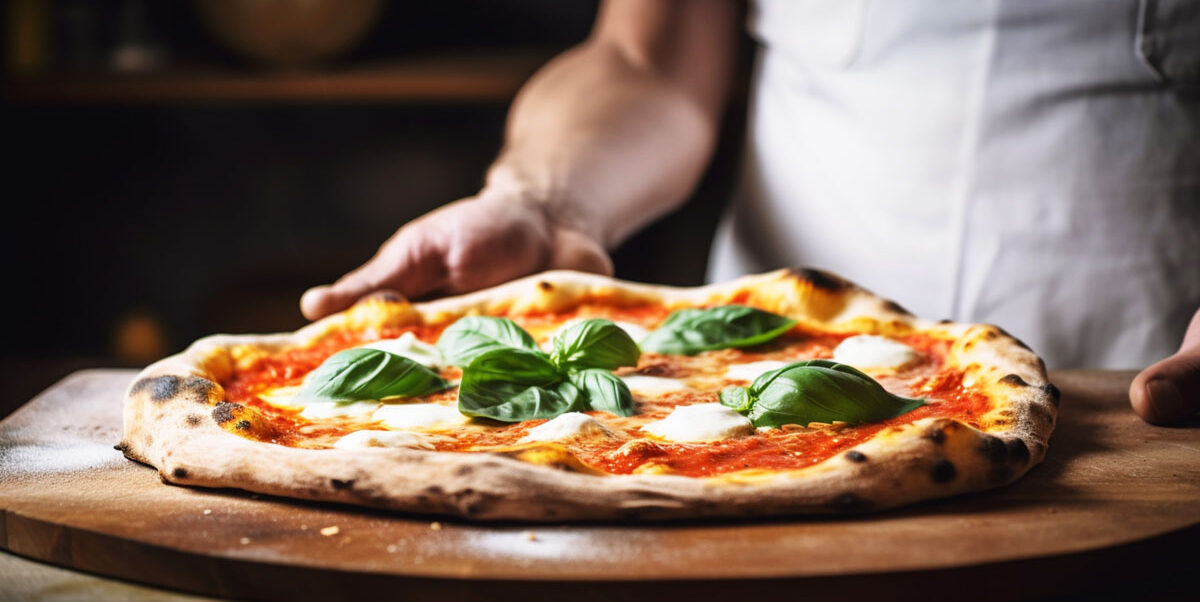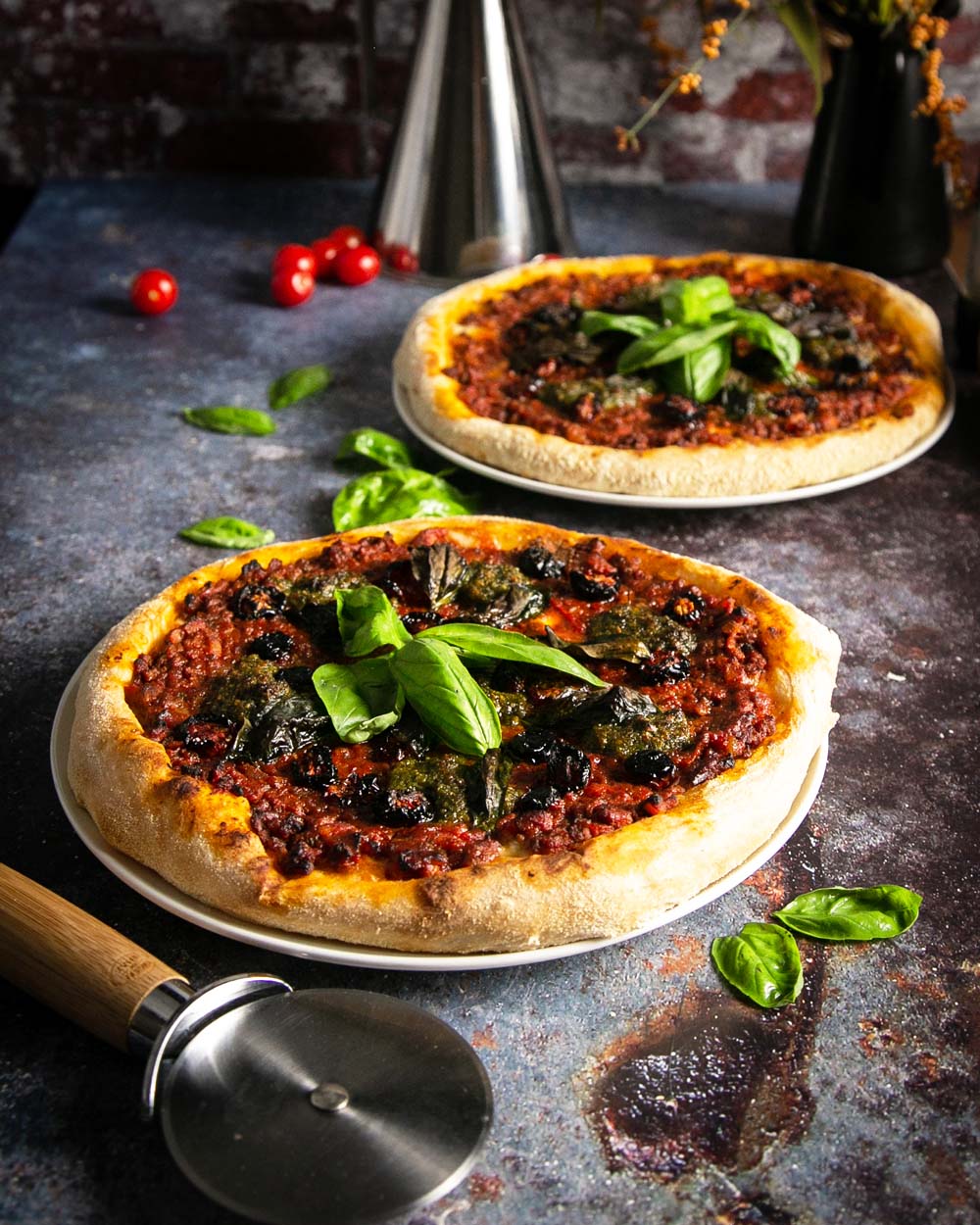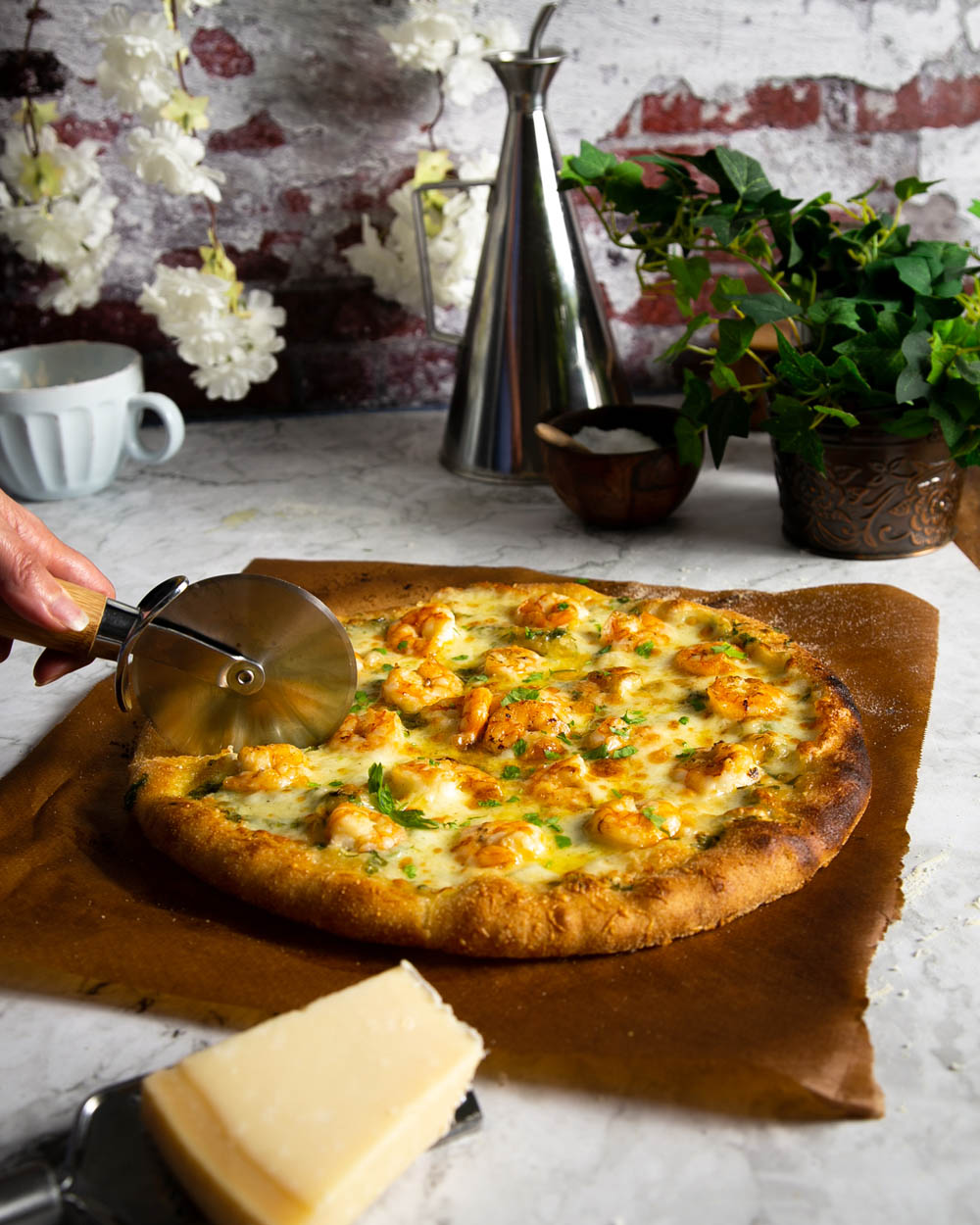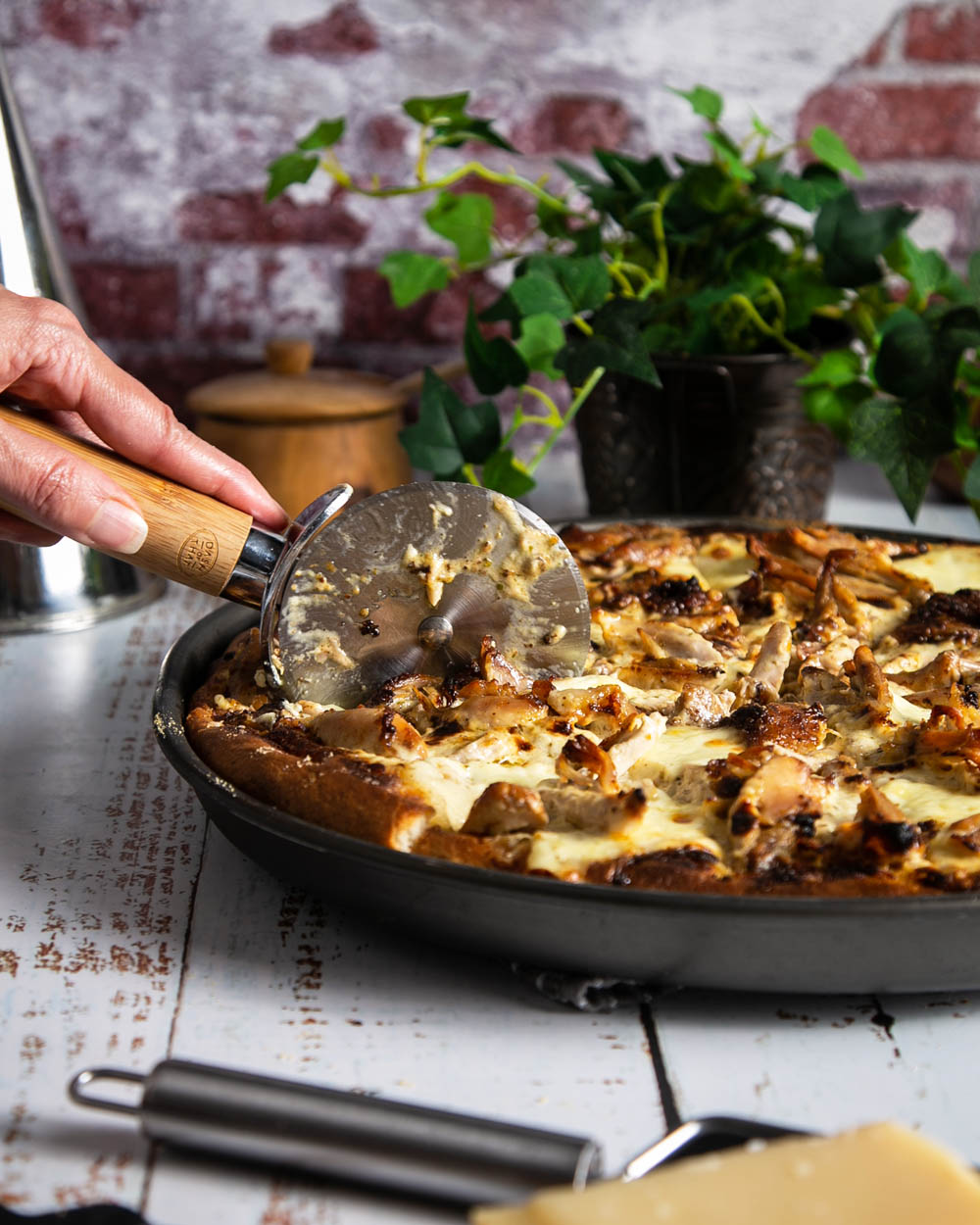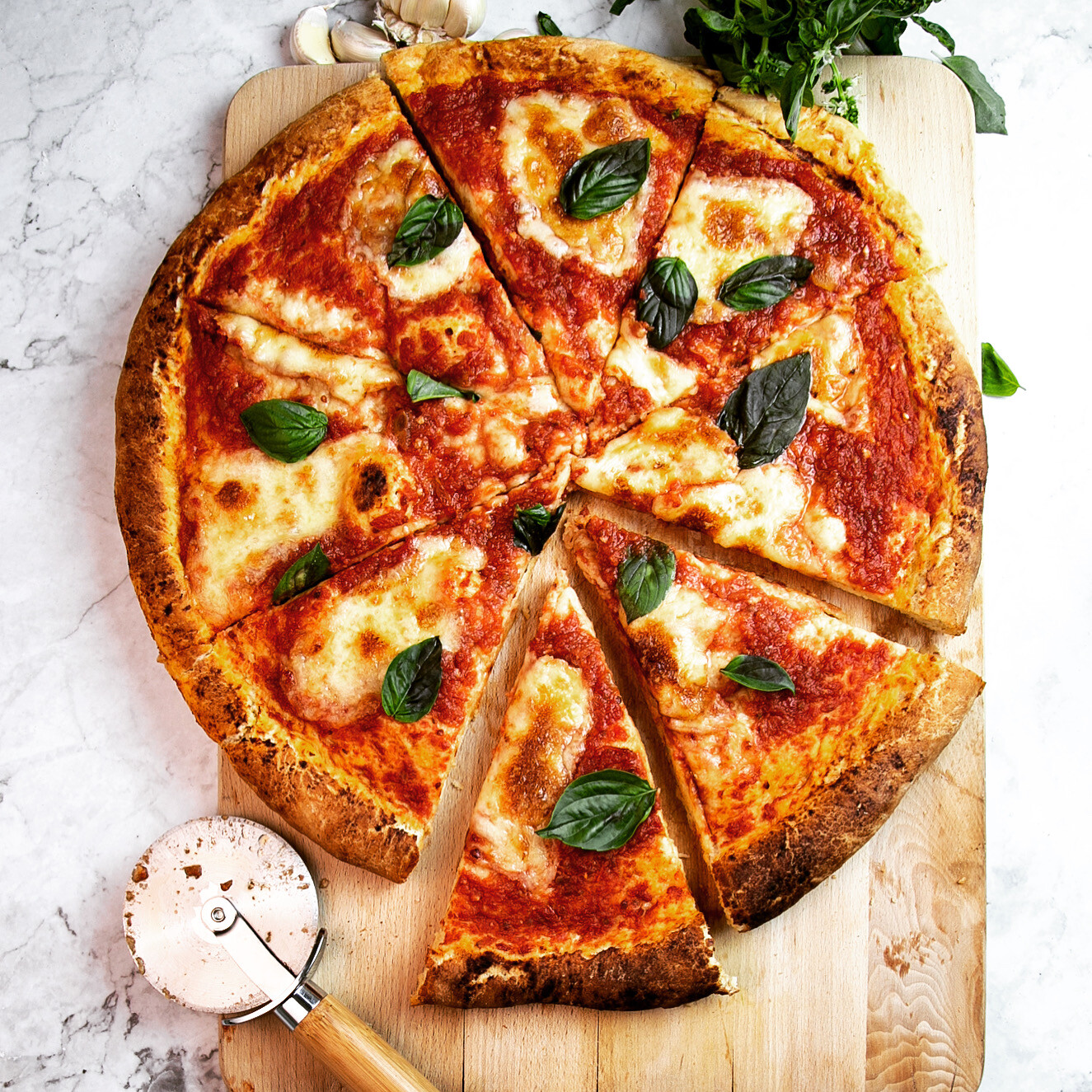The secret to a great pizza lies in its crust, and achieving that perfect balance of crispy exterior and tender interior. This can be a true culinary art form. Mastering the techniques can elevate your homemade pizza crust to a whole new level, rivaling even the best pizzerias.
In this comprehensive guide, we’ll delve into the essential steps for making an outstanding pizza crust. From the ingredients and tools you’ll need, to the methods that will ensure a perfect bake every time. As a bonus, we’ll also share some irresistible pizza recipes to put your newfound crust-making skills to the test.

- The magic of using a pizza stone in your oven
- Let’s talk flour: Picking the best one for your dream pizza crust
- The pizza peel shuffle: turning your pizza like a pro
- Pizza ovens: The ultimate investment for at-home pizza crust perfection
- The art of proofing: Giving your pizza dough the TLC it deserves
- Pizza fails to avoid: Steering clear of soggy, bland pizza crust catastrophes
- Try your new found skills out, we dare you!
The magic of using a pizza stone in your oven
If you’ve ever wondered how your favorite pizzeria achieves that crispy, golden crust on their pizzas, we’ve got the answer for you: they use a pizza stone! A pizza stone is an absolute game-changer when it comes to baking pizza at home. It’s a flat, round or rectangular slab made of ceramic, cordierite, or even steel that absorbs heat. Then distributes it evenly across the surface. This magical tool helps to draw out moisture from the dough, resulting in that mouth-watering crispy crust we all love.
To get the most out of your pizza stone, preheat it in your oven at the highest temperature possible (around 500°F or 260°C, if your oven allows). Do this for at least 45 minutes before baking. This will ensure that the stone is piping hot and ready to give your pizza that extra oomph! When it’s time to bake, slide your pizza onto the stone using a pizza peel dusted with cornmeal or semolina to prevent sticking.

Don’t worry if you don’t have a pizza peel; you can use the back of a large baking sheet instead. Just make sure to give it a little jiggle before you launch your pizza onto the stone to avoid any sticking disasters.
Once your pizza is on the stone, keep an eye on it as it bakes. You might notice that the side closest to the oven’s heat source starts to cook faster than the rest of the pizza. In that case, use your trusty pizza peel to give the pizza a gentle turn. This will give you even cooking and avoid any burnt spots. Trust us; your taste buds will thank you!
So, if you’re a pizza enthusiast looking to up your pizza-making game at home, investing in a pizza stone is a must. Not only will it make your crust taste like it’s straight out of a pizzeria, but it’s also super easy to use and clean. Just be sure to let the stone cool down completely before attempting to wash it – we don’t want any accidents!

Let’s talk flour: Picking the best one for your dream pizza crust
When it comes to creating a pizza crust that will make your taste buds happy, the type of flour you use is super important. We know, we know – flour is just flour, right? Wrong! Different flours have different protein contents, which affects the texture and elasticity of your dough. So, let’s dive into the world of flours and figure out which ones will help you achieve crust nirvana.
First up, we’ve got the all-star of pizza doughs: Italian “00” flour. This finely-milled, high-protein flour is the go-to choice for many pizza aficionados. It creates a silky, smooth dough that bakes up light and crispy. Giving you that authentic Italian pizza experience right in your own kitchen. If you’re serious about your pizza game, getting your hands on some “00” flour is a no-brainer. Margherita pizza and chicken pesto pizza both use this flour. Plus check out the pizza Bianca and Fugazzeta recipes.

But wait, there’s more! Another great option for your pizza crust endeavors is bread flour. Bread flour has a high protein content, similar to “00” flour. This helps create that chewy, tender texture we all crave in a good pizza crust. It’s also a bit more widely available, making it an excellent option for pizza lovers who might not have access to “00” flour. The famous New York pizza recipe successfully uses bread flour.
Now, if you’re looking to add a little rustic charm to your pizza crust, consider incorporating some whole wheat or rye flour into your dough. While these flours might not give you the same light and crispy texture as “00” or bread flour, they can add a lovely depth of flavor. Plus add a slightly denser texture. Try replacing about 25% of your regular flour with whole wheat or rye and see how your crust game changes!
Remember, when it comes to pizza crust, experimentation is key. Don’t be afraid to mix and match flours. Even try different ratios to find the perfect combination for your taste buds. After all, the best pizza crust is the one that makes you happy, so have fun and get creative with your flour choices.

The pizza peel shuffle: turning your pizza like a pro
Let’s face it, pizza is a beautiful thing. That perfect circle of dough topped with your favorite ingredients, cooked to perfection – it’s like a masterpiece on a plate. But what happens when your pizza doesn’t cook evenly, and you’re left with a slice that’s part crispy goodness and part doughy sadness? Enter the pizza peel, your new best friend in the quest for pizza perfection!
A pizza peel is a large, flat paddle with a long handle that’s perfect for turning your pizza while it’s baking in the oven. It’s a must-have tool for any pizza enthusiast looking to up their game and achieve that perfect, evenly-cooked crust.
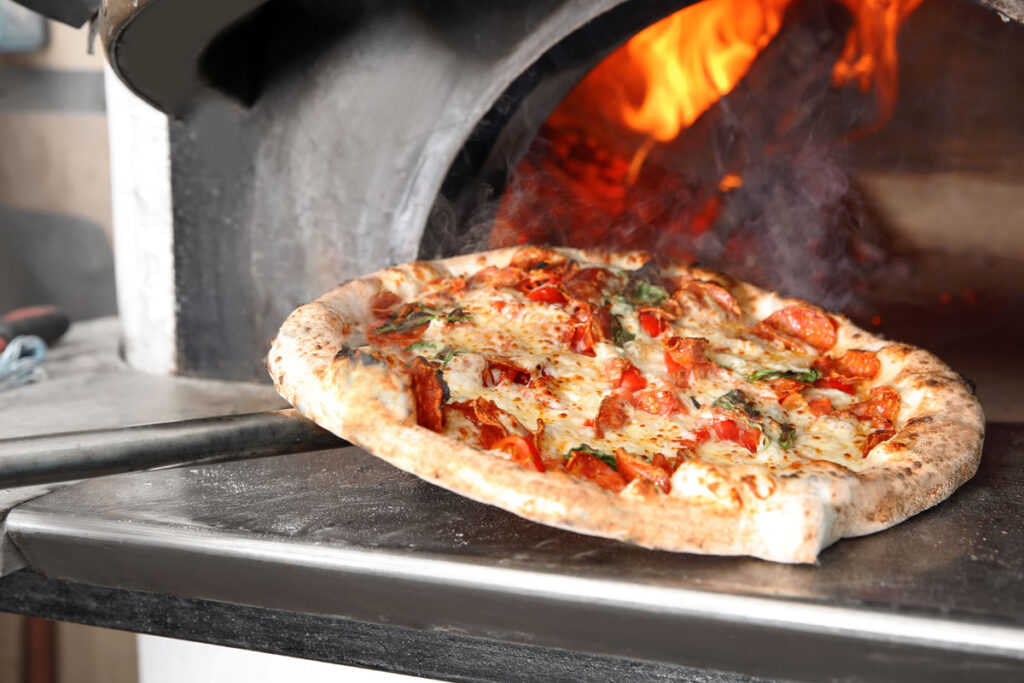
Now, before you go sticking your pizza peel into a hot oven, there are a few tricks you should know. First up, make sure to sprinkle some cornmeal or semolina on your peel before placing your pizza on it. This will create a barrier between the peel and the dough. Preventing your pizza from sticking and making it a breeze to slide onto the pizza stone.
Once your pizza is in the oven, keep a close eye on it. You’ll want to make sure it’s cooking evenly, especially if your oven has any hot spots. When you notice one side of your pizza starting to brown more quickly than the other, it’s time to break out your trusty pizza peel and give it a gentle turn.
To turn your pizza like a pro, simply slide the peel under the pizza. Then lift it slightly off the stone, and give it a gentle spin. Be careful not to poke or tear the dough as you do this. And remember, work quickly to avoid losing too much heat from the oven. Once your pizza is turned, close the oven door and let the magic continue.
Buy an Ooni turning pizza peel!

Pizza ovens: The ultimate investment for at-home pizza crust perfection
Now, you might be thinking, “But pizza ovens are huge and expensive, right?” Not necessarily! These days, there’s a whole range of pizza ovens to suit every budget and space constraint. From portable outdoor pizza ovens that can be fired up on your patio to compact countertop models that fit right in your kitchen, there’s an option for every pizza enthusiast. See our list of recommendations HERE
First things first, let’s talk about why pizza ovens are so awesome. The secret lies in their ability to reach much higher temperatures than your average kitchen oven – we’re talking 800°F (425°C) or higher! These high temps mean your pizza will cook super quickly, often in just a few minutes, giving you that perfect combo of crispy crust and melty cheese that’s just, well, heavenly.
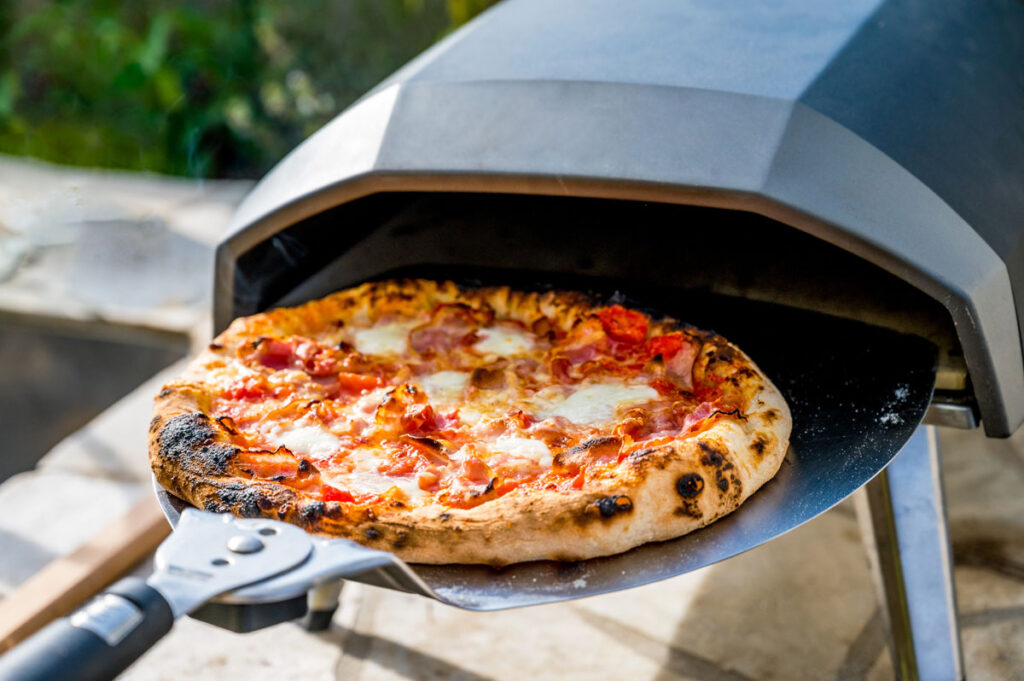
If you’re into wood-fired pizza, there are portable outdoor ovens that use wood pellets or logs to create that authentic, smoky flavor you crave. For those who prefer the convenience of gas, there are propane-powered pizza ovens that can be easily hooked up to a gas line or tank. And for the indoor pizza chefs, countertop electric pizza ovens can bring the heat without the need for an outdoor space.
But what about the dough, you ask? Fear not, pizza aficionados! Most pizza ovens come with detailed instructions on how to adapt your dough recipes to suit the high temperatures. Just check out our pizza ovenrecipe’s HERE.
So, if you’re serious about your pizza game and ready to invest in a pizza oven, take the time to research. Make sure to get the options that best suit your needs and budget. Once you’ve found your perfect match, it’s time to get cooking. And wow your friends and family with your incredible homemade pizzas. Trust us, once you’ve tasted the results of a pizza oven, you’ll never look back.
Buy an Ooni propane pizza oven!
The art of proofing: Giving your pizza dough the TLC it deserves
Alright, pizza pals, it’s time to have a heart-to-heart about a crucial step in your pizza-making journey: proofing the dough. You see, proofing is like the fairy godmother of pizza crusts, transforming your dough from a dense, lifeless blob into a light, airy, and downright magical base for your favorite toppings. So, let’s dive into the nitty-gritty of proofing and how to give your dough the tender loving care it needs to shine!
First off, what exactly is proofing? In a nutshell, it’s the process of letting your dough rest and rise after you’ve kneaded it. During this time, the yeast in your dough gets to work, fermenting sugars and producing carbon dioxide gas, which causes the dough to puff up and develop that delightful, bubbly texture we all know and love.
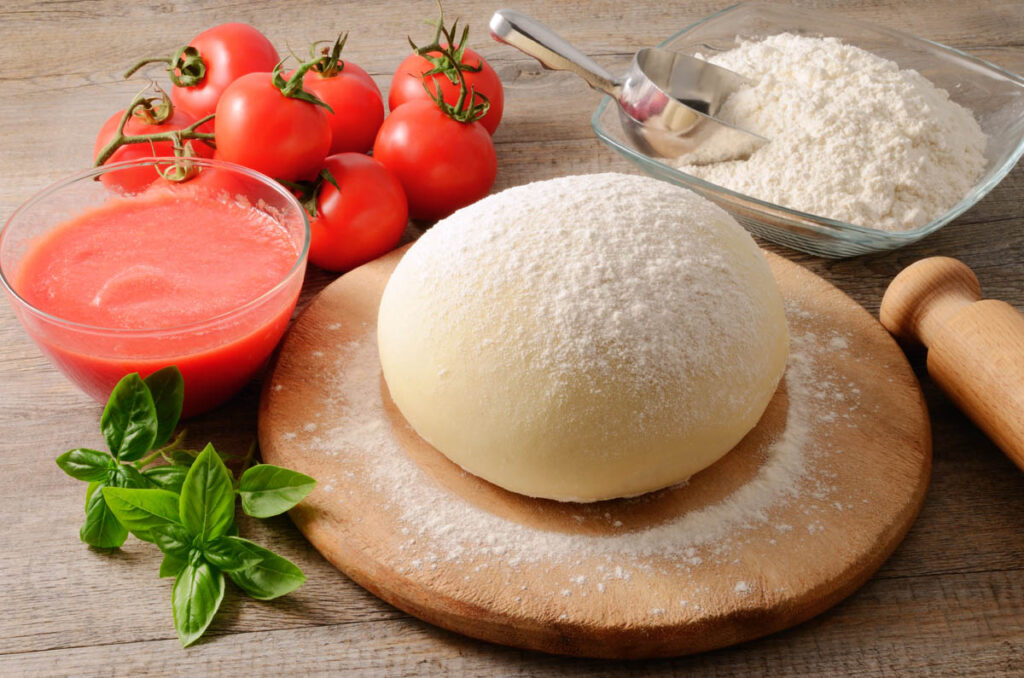
Now, there are a couple of ways to proof your dough. And the method you choose can have a big impact on the final result. Let’s start with the classic room temperature proof. After kneading your dough, cover it with a damp cloth or plastic wrap. Then let it hang out at room temperature until it doubles in size. This usually takes about 1-2 hours, depending on the temperature and humidity in your kitchen.
While the room temp proof is a tried-and-true method, we’ve got another option for you pizza perfectionists. The slow, cold fermentation. In this method, you’ll pop your dough into the fridge for a longer proofing period, usually 24-72 hours. The cold temps slow down the yeast’s activity, allowing for a slower, more controlled fermentation process. The result? A more developed, complex flavor in your crust. Try it and you’ll be converted!
When it comes to proofing, it’s essential to strike a balance between under-proofing and over-proofing. Under-proofed dough will be dense and less flavorful, while over-proofed dough can become too airy and collapse in the oven. To check if your dough is proofed to perfection, give it a gentle poke with your finger. If it springs back slowly and leaves a small indentation, you’re good to go!
In conclusion, don’t underestimate the power of a well-proofed dough. Whether you opt for a quick room temperature rise or a slow, cold fermentation, giving your dough the time and care it needs to develop will result in a crust that’s truly the stuff of pizza dreams.
Pizza fails to avoid: Steering clear of soggy, bland pizza crust catastrophes
Alright, pizza fanatics, it’s time for some real talk. We’ve all been there: you spend hours lovingly crafting the perfect pizza, only to pull it from the oven and discover that your crust is soggy, bland, and downright disappointing. Ugh, the heartbreak! But fear not, fellow pizza warriors, because we’re here to help you avoid these crust catastrophes and steer your pizza ship towards the land of crispy, delicious triumphs.
To help you dodge those pizza pitfalls, we’ve put together a list of common mistakes to avoid when preparing your pizza for the ultimate crust experience:
1. Overloading on toppings: We get it – sometimes it’s tempting to pile on all your favorite toppings, but showing some restraint is key to avoiding a soggy crust. Too many toppings can release excess moisture during baking, leaving your crust a sad, damp mess. Stick to a few well-chosen toppings, and be sure to pre-cook any that might release a lot of liquid, like mushrooms or spinach.
2. Skipping the preheat: Remember that pizza stone we talked about earlier? Well, it’s no good to you if it’s not piping hot! Be sure to preheat your pizza stone (or baking sheet) in the oven for at least 45 minutes before baking your pizza. This will ensure that your crust starts cooking immediately, locking in that crispy goodness.

3. Using cold dough: Trying to stretch and shape cold dough is a recipe for frustration and uneven crusts. Be sure to let your dough come to room temperature before attempting to shape it. This will make it more pliable and easier to work with, resulting in a more even crust that cooks beautifully.
4. Going sauce-crazy: Look, we love a saucy pizza as much as the next person, but there’s a fine line between just-right and too-much. Too much sauce can weigh down your crust and make it soggy, so use a light hand when spreading it. A thin, even layer should do the trick!
5. Neglecting your oven’s quirks: Every oven is unique, with its own hot spots and temperature idiosyncrasies. Get to know your oven and adjust your pizza placement or temperature accordingly to ensure an evenly cooked crust. And don’t forget to turn your pizza (using that trusty pizza peel) during baking to avoid any burnt or undercooked spots.
By keeping these tips in mind and avoiding these common mistakes, you’ll be well on your way to pizza crust perfection.
Try your new found skills out, we dare you!
Now that you’ve got the basics down, it’s time to put your skills to the test with these delicious pizza recipes and our top tips to advance your skills to new levels:
- Romana Tonda Recipe: A classic thin and crispy Roman-style pizza.
- Breakfast Pizza Recipe: Start your day off right with this tasty breakfast pizza.
- Pizza Marinara Recipe: A simple yet flavorful pizza featuring garlic, tomatoes, and oregano.
- Pizza Fritta Recipe: A delicious fried pizza, perfect for a unique twist on the classic.
- Hand Tossed Pizza vs Pan: Explore the differences between these two popular pizza styles and decide which one is right for you.

